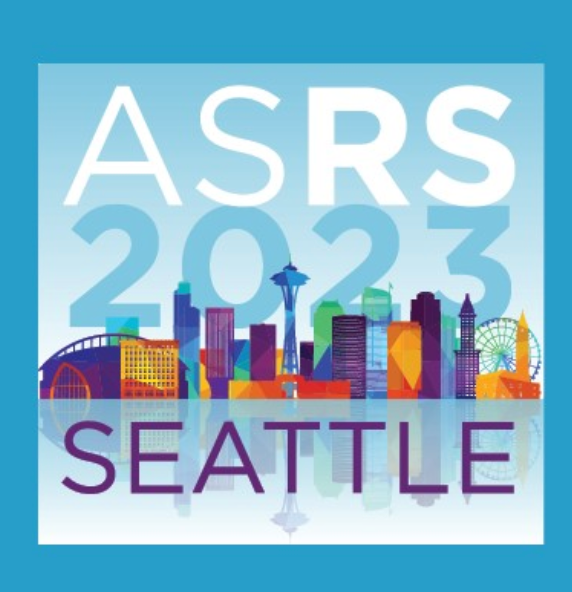What to Expect at the Retinal Specialists Meeting | ASRS 2023
Results from the PULSAR study of high-dose Eylea are scheduled to be presented Saturday morning at the American Society of Retinal Specialists annual scientific meeting, which is being held in Seattle this weekend.
Results from the PULSAR study of high-dose Eylea are scheduled to be presented Saturday morning at the American Society of Retinal Specialists annual scientific meeting, which is being held in Seattle this weekend.

New treatments for geographic atrophy, higher but less frequent doses of an existing treatment for wet age-related macular degeneration (AMD), biosimilars and gene therapy are among the topics on the agenda of the American Society of Retina Specialists (ASRS) 41st annual scientific meeting, which started this afternoon and concludes on Aug. 1.
More than 2,000 retina specialists from around the world — although mainly from the United States — are expected to attend the meeting, which is being held in-person at the Seattle Convention Center in Seattle, although many sessions can be viewed online by registrants through the meeting’s app.
ASRS officials described the registration numbers as excellent and said the meeting last year surpassed pre-COVID-19 pandemic attendance
Geographic atrophy is a late-stage version of dry AMD, the most common form of AMD, and it is a condition that affects approximately 1 million people in the United States. Despite being far more common than wet AMD, geographic atrophy has lacked approved treatments. That changed in February 2023 when the FDA approved Syfovre (pegcetacoplan). A single treatment has a wholesale acquisition price — the list price — of $2,190.
Syfovre has stirred up some controversy, though, because of questions about whether its effects on the anatomy of the retina translated into improved vision. “As of mid-2023, a spectrum of enthusiasm exists within the retina community, with some providers not planning to use the medication and others who see this is (as) a vital treatment,” says a recent post on pegcetacoplan on the American Academy of Ophthalmology’s Eye Wiki.
Syfovre is the subject of several presentations at the ASRS meeting, with the perhaps the most important scheduled to take place Sunday morning when data is presented on the drug’s long-term efficacy.
Another topic in the limelight is a wet AMD treatment regimen that involves administering injections of Eylea (aflibercept), one of the main treatments for wet AMD, at higher doses but at longer time intervals. Several researchers are presenting data tomorrow from the phase 3 PULSAR study that compares the current, 2-milligram doses given every eight weeks to an 8-mg doses given every 12 weeks and an 8mg dose every 16 weeks. Positive findings for the higher doses at great intervals have already been reported. Researchers are also presenting results tomorrow from the PHOTON trial that tested 8-mg doses as a treatment for diabetic macular edema.
Even if the higher dose of Eylea is approved — and it is expected it will be — the “treatment burden” of injections to treat wet AMD and other retinal diseases remains high. There are two presentations scheduled for Sunday morning on AbbVie’s RGX-314, a one-time gene therapy that AbbVie is hoping might avoid need for the continual injections.
As in other areas of medicine, biosimilars as a lower-cost alternatives to expensive brand-name treatments are a hot topic retinal diseases. On Saturday, Nita Valikodath, M.D., M.S., is presenting data on a comparison between biosimilar and originator medications for pediatric noninfectious uveitis. On Sunday, Ravi Parikh, M.D., a director of healthcare delivery research for the Department of Ophthalmology at the NYU Grossman School of Medicine, is talking about the “biosimilar paradox” of the approval of a biosimilar to the Avastin used off-label for retinal disease possibly costing patients and the healthcare system more because the low-cost, repackaged Avastin for ophthalmic use would need to leave the market.
Changes to Susvimo Port Delivery System Explained | ASRS 2024
July 22nd 2024Dante J. Pieramici, M.D., of the California Retina Research Foundation, explains changes made to the Susvimo port delivery system that are designed. to prevent the septum dislodgment that led to Genentech pulling the product off the market.
Read More
Results from retrospective real-world studies presented at American Society of Retina Specialists annual meetiing put the risk of retinal vasculitis from Syfovre at 1 in 1,330 patients. But other results presented at the meeting supplied evidence that Syfovre fends off vision loss caused by geographic atrophy, an advanced form of dry age-related macular degeneration.
Read More